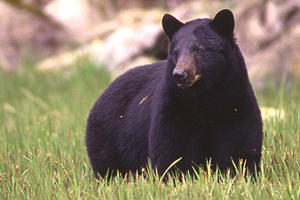Border securityBorder fences impede black bears’ movements
A new study finds that fences along the Arizona portion of the U.S.– Mexico border are hindering the natural movement of black bears

Border fences have cut off black bears in Mexico from their U.S.brethren // Source: nps.gov
A new study finds that fences along the Arizona portion of the U.S.– Mexico border are hindering the natural movement of black bears.
The roughly 666 miles of Arizona border fences have largely cut off black bears living in the United States from their brethren living further south.
Published in December’s issue of Biological Conservation, the study notes that “while black bears are not a species of concern in [the] U.S., they are in Mexico, which represents the southern extent of their historic and current range.”
Black bears are already suffering from urban encroachment and bears living along the border “may be particularly vulnerable to further loss of habitat due to urbanization and border security activities.”
Dr. Jon P. Beckmann, one of the study’s co-authors and an expert on bears with the Wildlife Conservation Society, said they were not interested in “weighing into” the ongoing debate about the efficacy of border fences. Instead, Beckman said the goal of the study was to make people “cognizant of the impact of human activities and how they are impacting wildlife populations.”
Beckman said he and his co-authors plans to share the results of the report with DHS and other state and federal border agencies in an effort to help generate innovative solutions that can allow bears and other large carnivores to move freely along the border.
According to the researchers, Arizona’s border lands and the Sky Island mountain ranges in particular are among the nation’s most biologically diverse areas. The border region is home to mountain lions, jaguars, and other unique species that come from as far away as South America.
